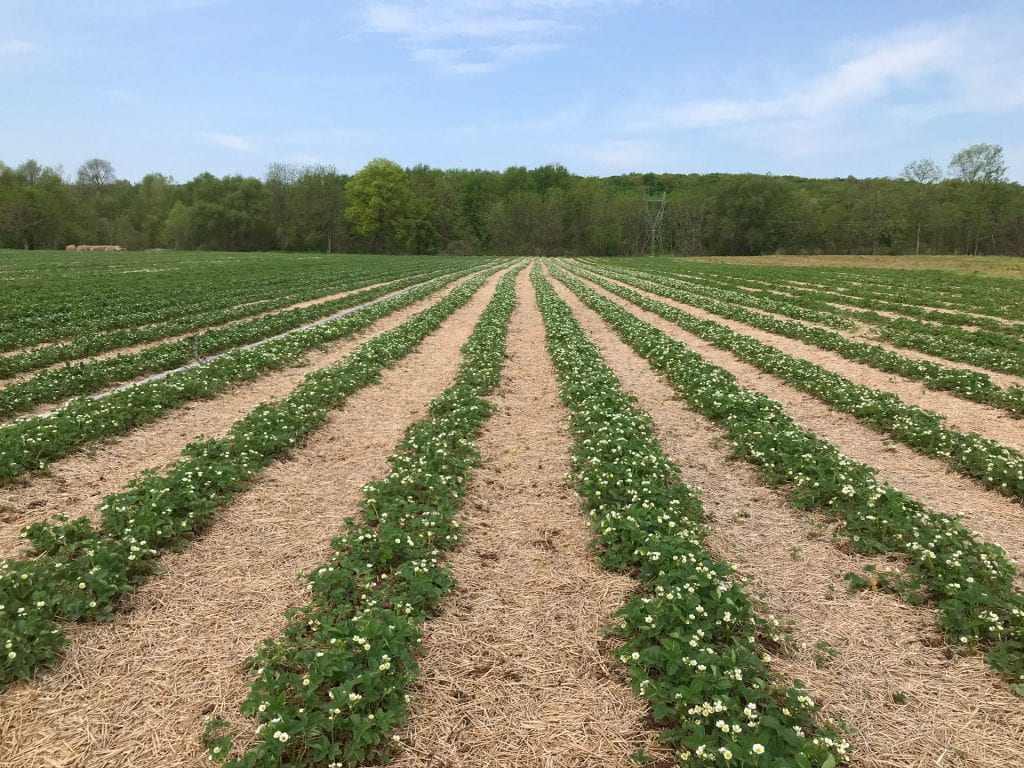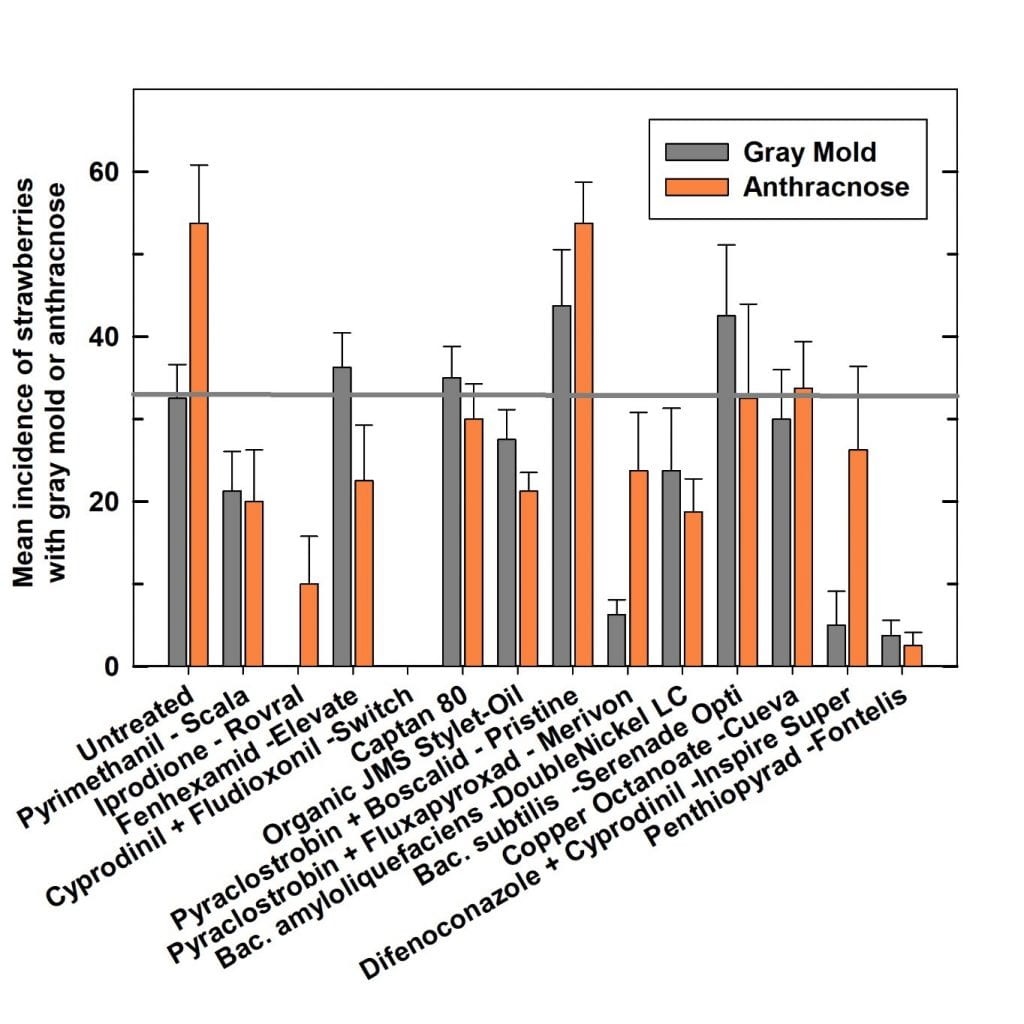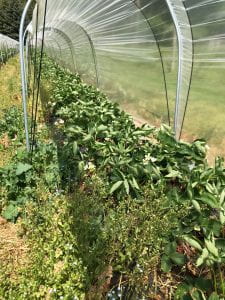
The cold weather is behind us in a big way – from famine to feast in terms of growing degree days. Just a few short weeks ago we were concerned about wet soils, but now hoping for some rain in most areas. Those fields that were heavily irrigated for frost protection may benefit in terms of soil moisture that will improve strawberry size.
Strawberries: Now in full bloom across WNY. Early strawberry flowers showed quite a lot of black centers, but secondary flowers have been pushing through with this heat and it looks like most fields will still have a reasonable crop. Bear in mind that with the early bloom delayed, and the later flowers now advancing rapidly in the heat, there may be little difference between early and late varieties, making for a very condensed harvest season. If we get some cooler weather, that may spread things out again, but it will be interesting to manage harvest.
Fields I have visited have been very clean, but from across the Northeast there are reports of tarnished plant bugs, spider mites and strawberry bud weevil (clipper) damage. Insecticides should be avoided now that we are in bloom, but keep looking for issues so that you are ready at petal fall. It is important to protect open blossoms against gray mold, especially if we see rain or heavy dew. You won’t see the infection until fruiting, but this is the time for prevention.
David Strickland and Kerik Cox did some work recently comparing the efficacy of the various fungicides against gray mold and anthracnose (see chart). They used the highest rates of all materials, and inoculated the berries (artificially applied spores to ensure high disease pressure). Under these conditions, Switch, Rovral, and Fontelis seemed to best prevent gray mold and anthracnose development. Other common fungicides were not as effective, but the researchers note that under field conditions disease pressure isn’t usually as high, and most of the products usually appear to provide reasonable control. A special qualification – the strain of gray mold used in this study is known to be resistant to the active ingredient in Pristine. Field populations of gray mold are likely not resistant, though this is changing in some areas.

(From Strickland and Cox, Best Fungicides for Strawberry Fruit Rots 2020.)
As mentioned last week, some fields are seeing more angular leaf spot due to sprinkling for frost protection. Copper products are not recommended now that we are in bloom. Oxidate/Rendition is the safest option for now.
Blueberries: In full bloom. Most areas seem to have escaped cold damage, though some plants in cold pockets did lose buds at the swollen stage.
Buds are swelling fast on the Rubus (brambles) and Ribes (currants & gooseberries). Expect bloom in the next week or so. There are some laterals that appear to have been damaged by the cold, and are not elongating. In some cases, secondary buds are pushing to replace these. It isn’t clear how this might affect the crop.
Growers are seeing young gypsy moth caterpillars, which have blown out of the trees. They aren’t particularly interested in strawberries, but will eat them if they are in the neighborhood. Gypsy moth caterpillars can be a bigger problem in blueberries, defoliating entire plants. Dipel can be used to control these if they get bad.

Many areas across the northeast are experiencing drought conditions. We have been lucky in WNY to get some timely rains, but be sure to get irrigation equipment into the field if it isn’t set up already. Adequate moisture is key for fruit size, yield and overall plant health.
